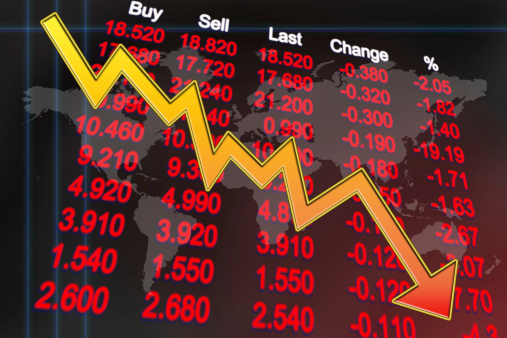While the current geopolitical issues around the world have thrown some volatility into the markets, most strategists feel that this is all in the context of a secular bull market. That means that the long-term trend should continue upward. Most firms on Wall Street that we cover have year-end S&P 500 targets that range from 1,850 to 2,000. Still, the overall valuations of the stock market are getting rich. Markets having rich valuations are not uncommon in a secular bull market, but neither are 5% sell-offs.
In a new research report, the equity strategists at Deutsche Bank point out that with the exception of mega-caps, price-to-earnings multiples (P/Es) of most stocks are very demanding. The median trailing P/E of S&P 500 stocks is 18.6. That number is two points higher than its historic average. Again, not unusual in a secular bull market, but above-average P/Es tend to bring above average volatility.
In March 2013, the S&P 500 transitioned into a secular bull market. Since 1950, the average secular bull market started from a mid-teens P/E and lasted about 2.5 years on average. The bull markets delivered double-digit annualized returns on average and usually ended on the onset of a recession, usually achieving a price peak at a P/E above the historical average. While we are just a year into the secular bull market, valuations are extended. That can cause the next big move.
In their report, the Deutsche Bank team has now changed their “Next 5%+” price move to down from uncertain. Volatility is starting to rise after well over a year of much lower volatility. Last year’s almost 30% upside move kept the VIX, which is the S&P volatility index, lower than normal. However, twice during the year it spiked from an average reading in the 12.5 range to over 18 — the same move it made in January as the market experienced a 6% sell-off.
History shows that normal volatility should provide at least one 5% to 10% dip during the year from the current six-month high, which would be the recent 1,878 close on the S&P 500 that occurred last week. History also shows that many times the 5% to 10% dip occurred during strong bull markets. In fact, the bull markets in 1983, 1984, 1986, 1987, 1997, 1998 and 1999 all saw multiple 5%+ dips.
While overall, the Deutsche Bank strategists are reasonably bullish, they point out that the severe weather impact has reduced the visibility and usefulness of first-quarter earnings as a signal for rest of the year. They would like to see an improving earnings per share (EPS) outlook from higher quality factors like better capital expenditure spending and export growth. They also would like to see the persistent trimming in forward earnings estimates come to stop.
While the bull market that started on March 9, 2009, may seem a little long-in-the-tooth to some, the actual secular bull market that started last year is just about a year old, and it is expected to continue another year or so, providing no major surprises occur that throw growth off track. The price gain of 177% from the March 2009 bottom is the fourth largest and above the average gain of 149%, but its gain of 20% above the prior peak (October 2007 peak of 1,565) is less than average.
What should investors do? In a smart asset allocation plan, assume that there will be a 5% to 10% correction at some point this year and plan accordingly. Keep 5% to 10% of your portfolio in cash and wait for the sell-off to come to you. Stocks typically go down much faster than they go up. So investors may have to be nimble and strike while the iron is hot.
Finally, do a portfolio checkup and see if it’s not time to take profits. If you have a Facebook, Tesla or Amazon that has been on fire, it can always be considered prudent to sell half and keep half. If it goes higher, you are a genius; same if goes lower. Look for the areas where you can take profits, or equal out against some losses and build the cash position up. The 5% to 10% correction may not be inevitable, but history says it can happen in bull markets. Being prepared with cash may make you not even care when (or if) the next 5% correction comes.
Sponsored: Attention Savvy Investors: Speak to 3 Financial Experts – FREE
Ever wanted an extra set of eyes on an investment you’re considering? Now you can speak with up to 3 financial experts in your area for FREE. By simply clicking here you can begin to match with financial professionals who can help guide you through the financial decisions you’re making. And the best part? The first conversation with them is free.Click here to match with up to 3 financial pros who would be excited to help you make financial decisions.
Thank you for reading! Have some feedback for us?
Contact the 24/7 Wall St. editorial team.



